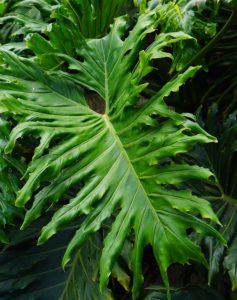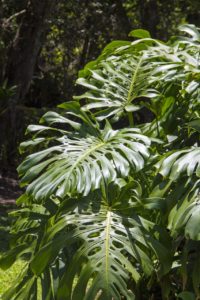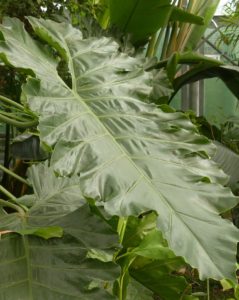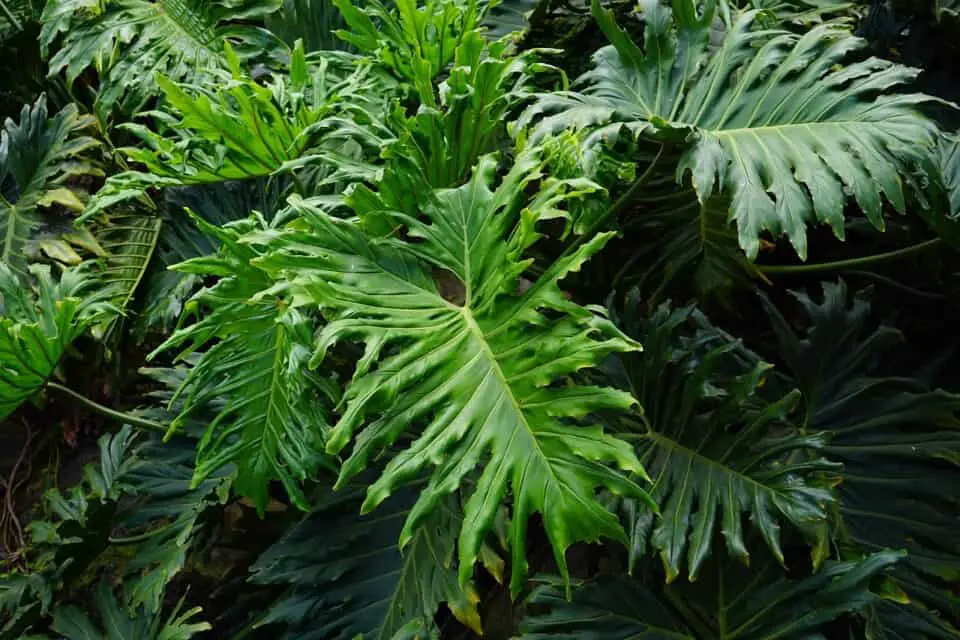Some links in the post are affiliate links and I get a commission from purchases made through some links found in the post.
One of my friends is a certified plant killer – they can’t seem to keep any plant alive more than four weeks in a row.
So, when they admitted that they were toying with the idea of getting (killing) yet another plant, so I had to think quick.
Often, people care for their plants because they enjoy looking at them (aesthetic value). But that’s not always enough. Sometimes, you need that extra nudge.
So, I decided to get them a plant that would also take care of them, thus creating a mutually beneficial relationship. And that plant was none other than the Philodendron- one of the best houseplants to have in your home.
A philodendron boasts a myriad of benefits; it is a known air purifier, it is easy to maintain, they have a great ability to adapt, they can permanently be grown in water and boost humidity.
Along with Philodendrons have the benefit of helping you sleep, reducing stress, increasing productivity and are easy to propagate.
These were but some of the motivations behind my Philodendron approval.
If you’re also thinking of getting this plant, read on to see just how beneficial this move would be for you:
What Are the Benefits of Having a Philodendron?
I’ve always known that plants take care of us. Even without getting technical about it, we know that they release oxygen into the air, which feeds the very lifeline that keeps humanity alive.
So, I knew that any plant would work for my friend as far as indoor air quality went. But since I wanted something a bit more alluring, I chose a philodendron for its following benefits:
1) Air Purifying Qualities
 Have you ever walked into a room filled with plants and automatically felt like the air was somehow fresher? That’s what an air-purifying plant does to a room.
Have you ever walked into a room filled with plants and automatically felt like the air was somehow fresher? That’s what an air-purifying plant does to a room.
And when you spend a lot of hours indoors, it’s easy to feel like the air is not clean enough – even with an AC unit running at high speed.
That’s why air purifying plants have become so popular, what with the lockdowns, looming high pollution rates, and the WFH cultures.
And the Philodendron makes for an excellent option. The Philodendron is NASA-approved, and you can bet that your gardener is not pulling your leg by claiming that this plant will work wonders.
It boasts large leaves, covering a wide area, and enabling the plant to remove formaldehyde in the vicinity. And the broadness of the leaves also works in blocking toxic EMF radio waves in the air!
Of course, some philodendrons have superior air-purifying qualities compared to others. These are the philodendron varieties:
- Philodendron Birkin,
- Philodendron Xanadu,
- Philodendron Brasil,
- Philodendron Monstera,
- Heart Leaf Philodendron, and
- Split Leaf Philodendron.
These are just some examples. You can always find others whose aesthetic values appeal to you more and choose from those.
PS: Did you know? Philodendron is simply a naming word for the Philodendron genus. Under it are hundreds of species that go by this name. And that gives you a whole lot of leeway when searching for the perfect plant.
You may also like: Can philodendron grow in shade?
2) Permanent Water Growth
If you often forget to water your plants, you will be happy to know that some Philodendrons can grow in water. Examples include the Heart Leaf Philodendron and Velvet Leaf Vine Philodendron. Can you imagine that?
And I should also add that the technique to grow these plants in water is very easy – even a complete beginner can hack this.
All you need is to provide the plant with its basic needs – light, feeding, temperature, humidity, etc. And change its water once a week.
Given that these plants tend to grow quite fast, you may want to add some pruning to the routine to avoid having to repot the plant.
The benefits?
- Aesthetic Value: You can use a water-grown Philodendron as a centrepiece instead of using flowers. To get an even better aesthetic, ensure that the container is clear, enabling people to peer at the roots and stems. And for an even better view, you can color the water!
- Easy Maintenance: Now that you will not run the risk of soggy soil, killing the plant will be much harder.
And because these plants trail, the view will be spectacular if you direct the growth around the home.
We have an article on how to propagate philodendrons in water.
3) Easy of Maintain
Had I mentioned that my friend kills almost any plant they house in their home? I was worried that the same fate would befall whichever plant I gave them.
So, I went with one of the easiest plants to maintain. Even if you are hell-bent on killing this plant, it will put up a fight.
And that’s what every plant killer needs – a plant that can withstand those few days or weeks of neglect. So, what does a philodendron need to survive?
 Bright and indirect light: It does well in partial sunlight/ shade and burns in direct sunlight,
Bright and indirect light: It does well in partial sunlight/ shade and burns in direct sunlight,- A good potting mix: It should be well-draining with an acidic pH,
- Repotting every few years,
- Moderate watering only when the top three inches of the soil are dry: The plant does not like soggy soil and would prefer to be underwatered than overwatered. It does not even need much watering in the winter – you can do it once a month!
- A wide range of temperatures as long as they remain above 55 degrees Fahrenheit, and
- A bit of humidity.
And to top it all off, it only needs feeding once a month and does not need fertilizer in the winter. When I read these instructions and how easy it was to follow through, I knew I had found the perfect plant.
4) Adaptability
Not all plants take well to being moved to another environment. And sometimes, the shock is so much that it kills the plant. But luckily, that is not the case with the Philodendron.
Did you know that Philodendron means ‘tree-loving’? Essentially, these species grow in the wild, where they survive by clinging on to taller vegetation, searching for light.
So, even in their native habitats, these plants are fighters and make do with what they have.
To keep this plant alive, all you need to do is ensure that it has access to bright and indirect light. You can do this by placing it near a window away from the direct sun rays.
If the plant is kept in shade or dim light for too long, it starts moving towards natural light. It does so by capitalizing on its light-harvesting complex, enabling it to absorb more light.
That’s why the leaves in dark areas of the room will be much greener than the others.
When the plant can access enough light, it no longer needs much of the light-harvesting complex, and the resultant leaves are thus less green.
This capability enables you to slowly ease the plant to the shaded regions in your home, knowing that it will bounce back soon. However, that is not a green light to keep it from light in totality – that could kill the plant.
You may also like: Can a Philodendron be put Outside
5) Humidity Boost
Does the air in your home ever feel too dry? You can fix this by adding a Philodendron – this plant has a high transpiration rate.
And you know what that means – more moisture in the air. Thus, aside from eliminating toxins in the air, it also makes it easier to enjoy the fresh air in your home.
That can come in handy in the summer when the heat can be a tad uncomfortable.
6) Philodendrons are easy to Propagate
A philodendron is easy to propagate, the best time to propagate a philodendron is in the spring.
To propagate a philodendron, use sharp disinfected shears or scissors and take a cutting about 4 inches from the end of the stem. Make sure the stem is not damaged or diseased.
Make the cutting just below the node and then remove any leaves from the bottom half of the cutting before placing it in either water or soil.
When the roots have grown to a few inches, which will take a few weeks, they are ready to be transplanted.
7) Philodendrons can Reduce Stress
 There are multiple benefits to having a house plant. These include lowering anxiety and stress, reducing mild depression, lowering blood pressure and increasing productivity.
There are multiple benefits to having a house plant. These include lowering anxiety and stress, reducing mild depression, lowering blood pressure and increasing productivity.
Introducing a philodendron to your home can give you all the benefits stated above along with providing beautiful greenery to your home.
You may also like: How to Fix Your Philodendron Selloum Problems
8) Philodendron is a Great Sound Proofer
Plants can reduce the noise levels in the home and outside using three different methods, which are; deflection, absorption and refraction.
These three methods are all due to the leaves. Each plant is different in it’s sound proofing affect due to the size and shape of its leaves.
The Philodendron is no different and each species can have differing sound proofing affects on your home.
Final Thoughts: What are the Benefits of Having a Philodendron?
And to finish it off, I will also point out that Philodendrons are beautiful houseplants – available in a range of sizes, shades, and patterns.
So, finding one that matches your décor is a breeze. Happy Gardening!
Before you go, here are some more related articles I encourage you to read below to help solve more of your gardening issues:
How to Care for a Philodendron Tiger Tooth


